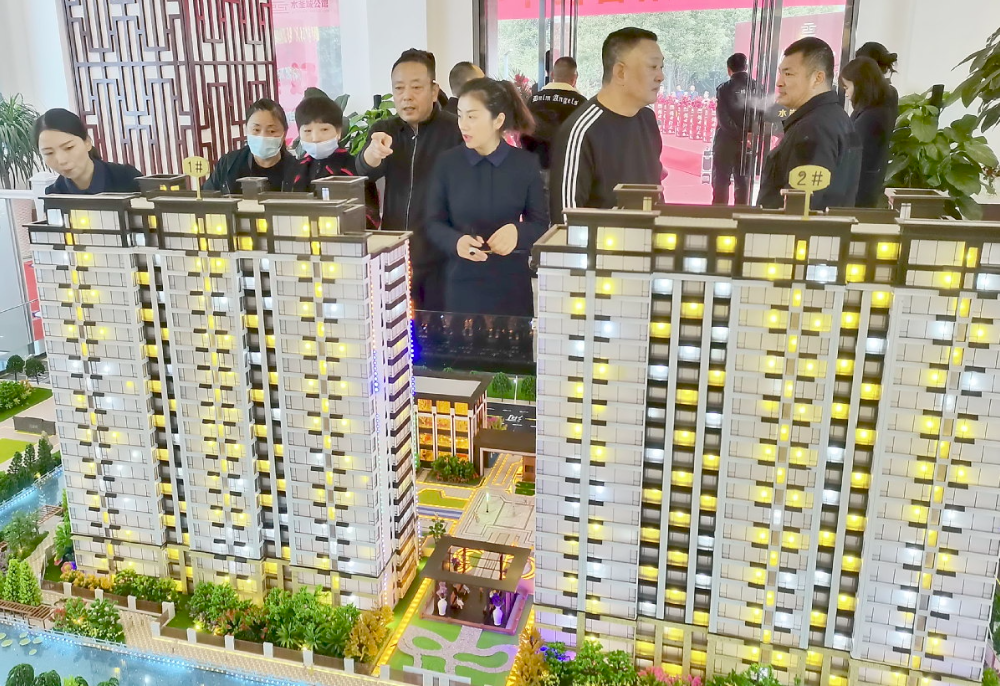
Published 09/24/2024 16:26 | Edited 09/24/2024 18:24
The Chinese government announced on Tuesday (24) a broad economic stimulus package, the most significant since the start of the pandemic, in an attempt to reverse the challenging economic scenario. With signs of slowdown and deflation, financial authorities have taken comprehensive measures to support the real estate sector and inject liquidity into the market, in an attempt to achieve the 5% growth target for this year.
The intention is clear: to stabilize the real estate sector and restore investor confidence, which is essential to stave off deflation and help China achieve its growth targets. The measures have been received with optimism by the market, however, the same analysts question the effectiveness of these measures in the long term.
The world’s second-largest economy has struggled to regain momentum since the end of Covid-19 restrictions. Industrial output and retail sales have slowed, while stock and property markets have suffered sharp declines. Unemployment has also risen and prices have continued to fall, putting the country in its longest deflationary streak since 1999.
The measures
The People’s Bank of China (PBoC) and other financial regulators announced a reduction in banks’ reserve requirement ratio by 0.50 percentage points, freeing up approximately 1 trillion yuan (about R$782 billion) for new lending. A future reduction in the reverse repurchase rate, which could fall by 0.2 percentage points, was also promised, in addition to expected cuts in the medium-term lending rate (MLF) and the lending prime rate (LPR).
The reduction is aimed at making it cheaper for businesses and households to borrow and signals a more aggressive stance by the central bank in fighting deflation after a period of caution. It comes just days after the U.S. Federal Reserve cut its interest rate, giving Beijing room to adopt a looser monetary policy without significantly devaluing the yuan.
These changes, combined with lower home mortgage rates and easing conditions for purchasing property, are attempts to revitalize the real estate sector, which has been in a prolonged crisis.
In addition, new capital market support tools were introduced, such as a 500 billion yuan swap program to facilitate the purchase of shares by insurers and brokerages, as well as cheap loans from the central bank to help commercial banks finance the repurchase of shares of listed companies.
Immediate reaction of the markets
Stock markets and iron ore contracts reacted positively to the measures. The CSI300 index, which includes the largest companies listed on the Shanghai and Shenzhen stock exchanges, rose 4.33%, the biggest daily percentage gain since March 2022. Iron ore also surged, with the January contract on the Dalian Commodity Exchange rising 4.64%, the biggest intraday gain in more than a year.
The market, which had been expecting more aggressive cuts in the benchmark lending rate (LPR), was surprised by the decision to keep rates unchanged at 3.35% for one year and 3.85% for five years, which raised questions about China’s real willingness to adopt deeper monetary easing.
The structural challenge: growth and confidence
The Chinese economy faces a dilemma: the need to stimulate growth without generating greater imbalances. Although the package announced is the largest since the pandemic, China’s historical reliance on real estate and public investment raises the question of sustainability.
Households, burdened by housing debt, may not fully benefit from lower mortgage rates, while the private sector remains hesitant to increase investment amid weaker domestic demand.
The real estate sector, once a pillar of growth, has been in decline since the Evergrande crisis, and the market remains under pressure from an oversupply of properties and falling property prices. Measures to make it easier to buy a second home and reduce down payments to 15% nationwide are attempts to restore demand. However, without a more solid recovery in consumer confidence, the outlook for the sector’s recovery remains uncertain.
Analysts call for more fiscal stimulus
The announcement of the measures had an immediate impact on markets. The CSI300 index, which tracks major stocks listed in Shanghai and Shenzhen, rose 4.33%, while Hong Kong’s Hang Seng Index rose 4%, reaching levels not seen since early 2022. The yuan also appreciated, reaching its highest point in 16 months against the dollar.
While the package has soothed market sentiment in the short term, analysts say more aggressive fiscal policy will be key to China meeting its growth targets. Consultancy ANZ noted that a rate cut may be saved for a broader stimulus package that could include significant public investment and fiscal relief measures for businesses and households.
Another point of concern is the growing inequality between global economies. While the United States, for example, faces a cycle of rising interest rates, the recent monetary easing by the Federal Reserve has opened up space for Beijing to ease its monetary policy without triggering a sharp depreciation of the yuan, something the Chinese government is trying to avoid at all costs.
The Long-Term Growth Dilemma
The Chinese economy has proven resilient in past crises, but today’s challenges are different. An aging population, slowing productivity growth and a more hostile international environment — especially trade tensions with the United States — are imposing a new paradigm for the world’s second-largest economy.
The package announced this week is an important piece of legislation, but analysts agree that solving China’s structural problems will require more than just monetary easing. It will require a deeper economic rebalancing focused on fostering innovation, boosting productivity and transitioning to a more sustainable economy that is less dependent on traditional sectors such as real estate.
Real estate crisis and impact on the middle class
A key focus of the package is the property sector, which once accounted for about a quarter of China’s economy but is now in steep decline. New home prices fell the most in nine years in July, and a Reuters poll estimates China’s property prices will fall 8.5 percent this year.
To reverse this trend, the PBOC announced a reduction in mortgage rates, which are expected to be cut by 0.5 percentage points, as well as a reduction in the minimum down payment for second-home buyers, from 25% to 15%. These measures aim to revitalize the housing market and ease the burden of household debt, which, according to estimates by Gavekal Dragonomics, could generate savings of US$21 billion per year in interest.
Growth target at risk
Even with the stimulus package, many analysts doubt that China will be able to reach its 5% growth target set for 2024. These are the same doubters who have been surprised by the Chinese economy’s continued unexpected advances due to their failed forecasts. Institutions such as Goldman Sachs and Citigroup have reduced their forecasts for Chinese growth to 4.7%, while Morgan Stanley projects a rate of 4.6%.
China’s economic slowdown is part of a global context of uncertainty, especially with the uneven post-pandemic recovery and trade tensions. Despite this, the country’s growth is unprecedented by Western standards in the current situation. The country faces the challenge of balancing stimulus without creating asset bubbles or increasing excessive debt, as has occurred in economies such as the US.
Source: vermelho.org.br

